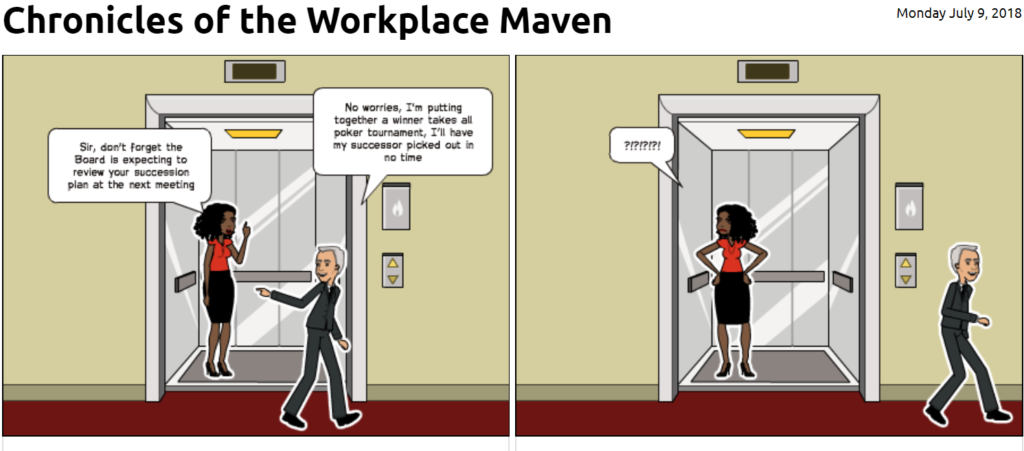Most organizations understand the necessity of a well-defined business strategy. Few, however give thought to the leaders, both present and future, that will be required to implement these strategies. Even the best business strategies will fail without effective leadership. What can your organization do to avoid the risks associated with not having the leaders it needs to attain current and future business needs? Here are 3 steps to developing an effective leadership strategy that ensures you will develop the leaders you have and create future leaders along the way.
1. Establish Leadership Profiles
The first step in developing a successful leadership development strategy is defining the best leadership profile for your organization. Now, this doesn’t mean follow the typical approach of identifying generic individual attributes that are often used to describe an “effective” leader such as “strong communicator”; or “team player”. It’s about digging deeper and truly defining what are the distinct set of skills, abilities and characteristics that leaders at all levels of the organization must have to be able to deliver the specific results your organization needs to meet the demands of its customers. So, where do you begin? Start with identifying what is your organization’s business reality, i.e. understanding the current expectations of your internal and external stakeholders and to what extent you are meeting them? This will help you pinpoint what actions or behaviors are making the organization successful or unsuccessful and from that shape what is needed in your leaders. It’s then also necessary to look beyond the current state and anticipate changes in the business environment to identify what competencies and skills will be needed in the future to position the business for continued success. Lastly, align both sets of information with the organization’s culture and daily operations. For example, let’s say you are a chain retailer with extremely low margins whose customers depend on being sold products at the best bargain pricing with an expectation of superior customer service – some of the business-specific leadership competencies that would be relevant to this particular organization would be cost-consciousness; customer centricity; ability to scale internal processes to minimize costs as well as ability to create future processes or models to continue to offer its customers the best pricing; and ability to motivate and engage employees so that customers receive a positive experience. It’s ultimately about substantively defining what are the qualitative and quantitative leadership qualities needed for your business-specific success.
2. Assess Current Leaders
The good news is that since you’ve already done the hard work of developing your leadership profile and have identified the leadership behaviors that align with your business objectives based on the realities of your business, it will be a lot easier to assess whether your current leaders are meeting the mark. So where do you start? Evaluate those currently in leadership roles and measure what’s important. Specifically, assess whether their actions and behaviors are consistent with the identified leadership competencies that are needed by your organization and whether those same actions and behaviors have provided the organization with expected results. Once current state is determined, and any existent gaps identified, a leadership development strategy should be formulated to set the blueprint for the desired future state. Included in that strategy should be the implementation of meaningful programs which recognizes and fosters the individual’s skills, strengths and talent while also aligning them with the leadership competencies needed to meet current and future business objectives. There are a variety of leadership training programs and experts that can assist with this endeavor, but to be meaningful it must be about more than just training. Individual assessments and personalized development plans will ensure that the development efforts are geared towards individuals reaching their leadership potential. Couple that with programs that are structured to expose individuals to all aspects of the organization such as project leadership, job rotations and mentorship, and you’re on your way to a winning development strategy.
3. Develop Succession Plans for Future Leaders
A relevant succession plan is the final, yet crucial element of a leadership development plan and it should be two-fold. The first aspect involves the act of identifying current employees who have the skills and competencies, or the potential to develop the skills and competencies identified in your leadership profile – and providing those employees with access to developmental programs, support and resources to reach that potential. An advantage to focusing on developing leaders internally is that the organization benefits from productivity sooner than it would from an external candidate because internal potentials are already familiar with your business and your culture. The key to internal succession planning is to ensure that you focus on all critical roles in the organization, especially those in middle management who are often overlooked in this process. Those supervisory mid-level management levels are likely the roles that have the most direct impact on the business and usually make up a larger population than senior executive levels, so it is key that development efforts are focused on those individuals in those roles for the long-term health of the organization.
The second aspect of an effective succession plan is to ensure you have an effective recruiting strategy that either attracts established leaders with a proven propensity towards the identified leadership competencies or sources candidates with leadership potential. By recruiting the right people in the first place, you will create a consistent influx of leadership talent into the organization.
Developing current and future leaders is time well-spent and should be a top priority. The success of any organization depends on capable leadership. If you need support in implementing a leadership development strategy for your organization, contact HR & Beyond at info@hrandbeyond.com. We’d be glad to help.

